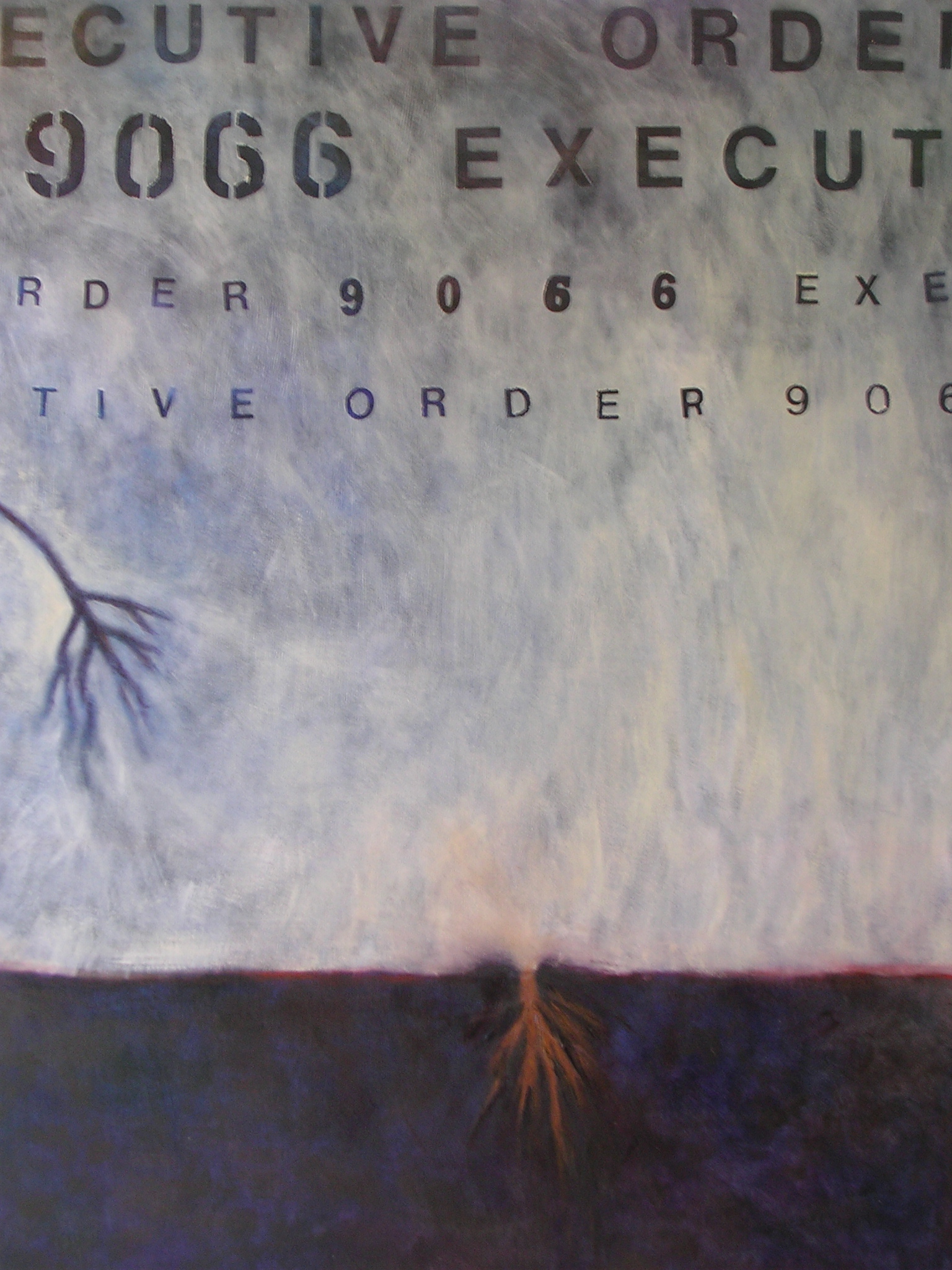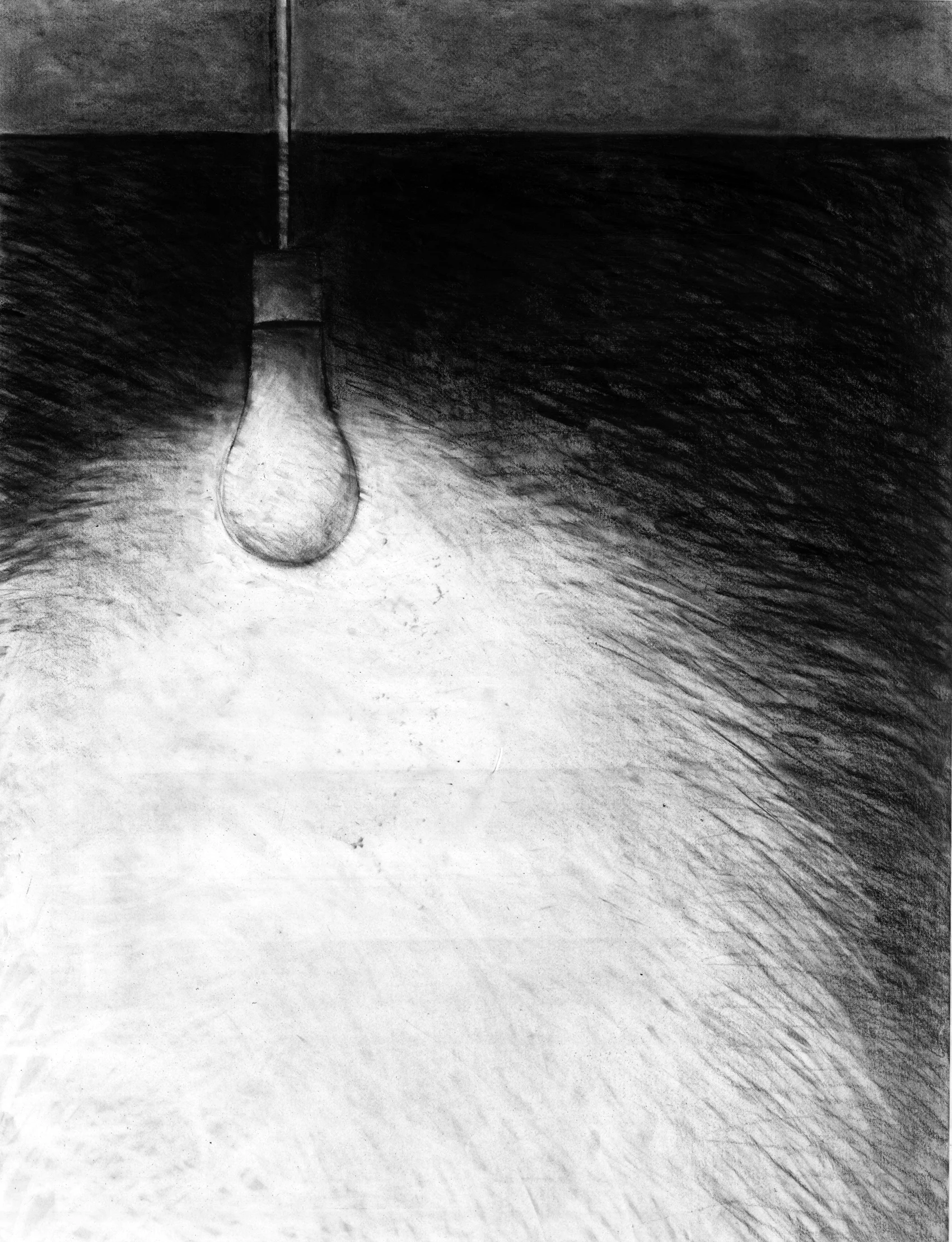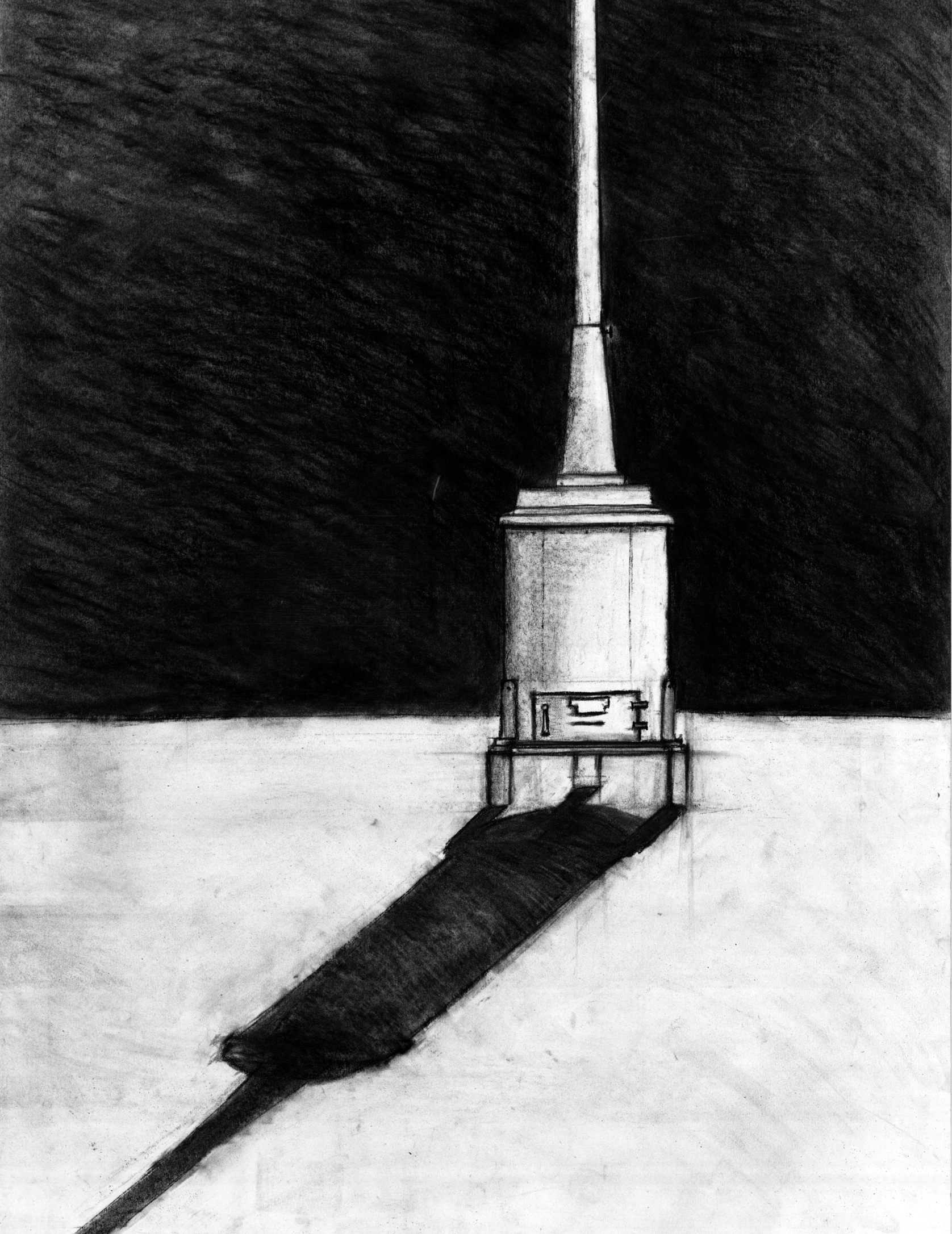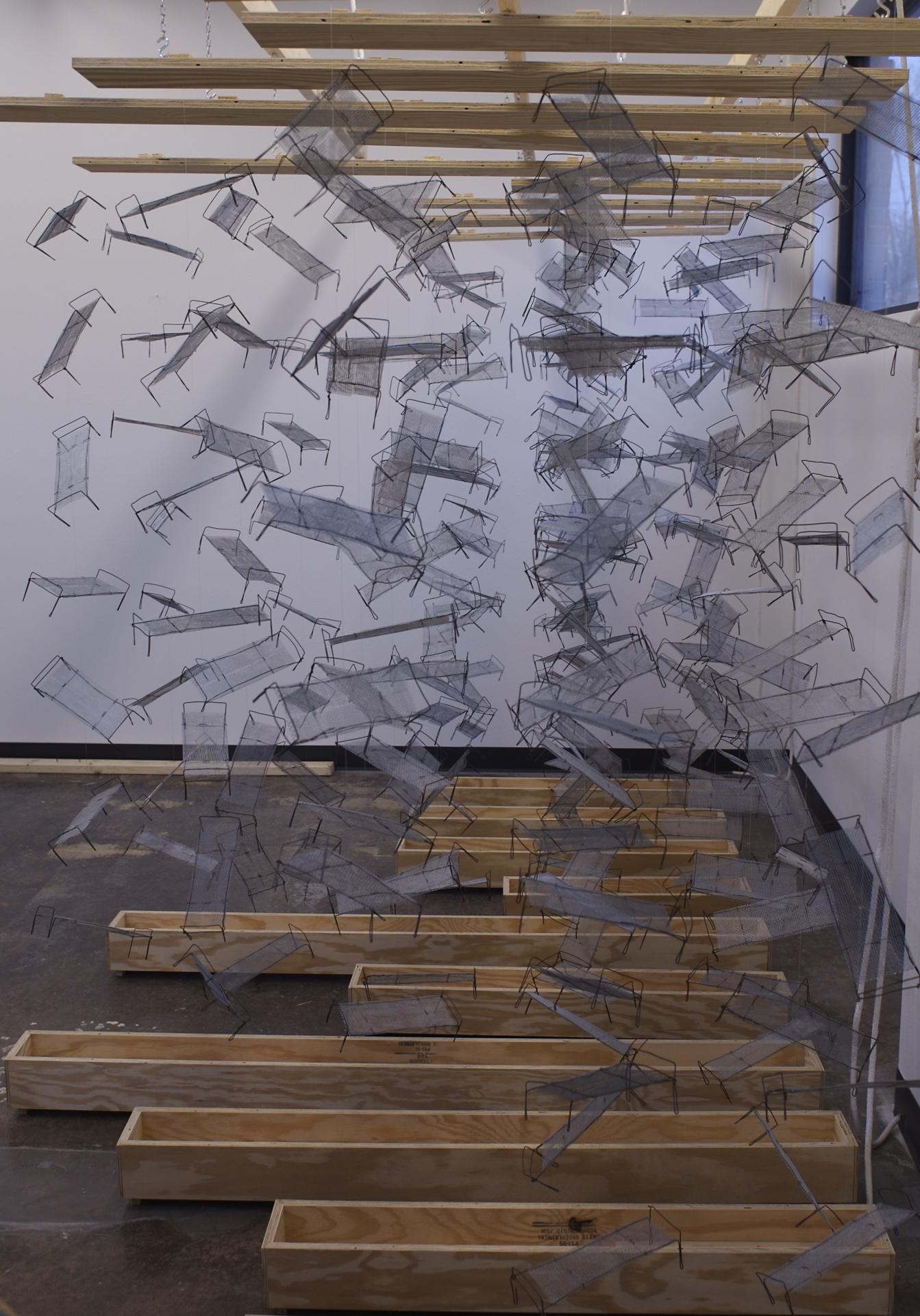Here is a series of paintings and drawings based my parents' experience in the Japanese American Internment Camp at Rohwer, AR during WWII.
Franklin Delano Roosevelt exercised his war powers by signing into law Executive Order 9066 on February 19, 1942. This gave the military the ability to uproot and intern 120, 000 Japanese immigrants and Japanese American citizens living along the west coast of the US into 10 camps.
Liberty and Justice for All, oil, acrylic, charcoal on tar paper, 48 x 72
In the camps, children recited the pledge of allegiance in school. The phrase “liberty and justice for all” is ironic as these children and their families were held behind barbed wire fences.
FDR's Moon, Too, charcoal on paper, 22 x 30
Franklin Delano Roosevelt had to live with his decision to intern innocent civilians. Two-thirds of those incarcerated in the camps were American citizens. The average age of those in the camps was 17.
Barracks-Who's Next? charcoal on paper 22 x 30
Is there another ethnic group that may be put into camps due to war hysteria and racial profiling?
Don't Treat Us Like Animals, charcoal and graphite on paper, 32 x 40
Before being permanently assigned to an internment camp, everyone was sent to an assembly center for several months. My mother and her family had to live at the Santa Anita racetrack in a horse stall that had been whitewashed by the government. They slept on mattresses filled with hay. During the day they helped in the war effort by making camouflage nets for the army.
Camps Rising Out of the Fields, charcoal on paper, 24 x 40
I visited the rural site of the Rohwer Arkansas Internment camp where my parents both were interned. This swampy land near the Mississippi River was drained for the camps. As I stood and walked among the acres of cotton fields, I could imagine the camps rising out of the fields.
Overcrowded, oil and acrylic on canvas, 22 x 30
The camps were overcrowded and people had to wait in line for food, the bathrooms, and showers.
Fully Furnished: Light bulb, cot, coal stove, triptych, charcoal on paper 66 x 30
In the barracks each family shared one small room. They were furnished with only three things: a light bulb, military steel army cots with two blankets and a coal-burning stove. Any other furniture, such as tables, chairs or shelves were made by the internees from scrap lumber left over from building the barracks.
Target Practice, mixed media on canvas, 34 x 48
Japanese Immigrants and Japanese-Americans were targets with the face of the enemy.
Life Interrupted: The Internment Camps, plywood, wire, wire mesh, spray paint, 6' x 11' x 7'
This sculpture represents the population in each of the 10 internment camps. The strings of cots above each box represent the number of people in that camp at a ratio of 1:500. Each cot represents 500 persons. The actual population of each camp is shown in orange in the bottom of each box. The lives of 120,000 Japanese aliens and Japanese Americans were abruptly interrupted and suspended due to war hysteria.
This work was exhibited at Crystal Bridges Museum of American Art, Bentonville, AR, November 11, 2015, Reynolds Performance Hall, University of Central Arkansas, Conway, AR, November 9, 2015, WWII Japanese-American Internment Camp Museum at the Jerome-Rohwer Interpretive Museum and Visitor Center in McGehee, Arkansas, April 16-July 16, 2014, Park Central Gallery, Springfield, Missouri, March 2007.













